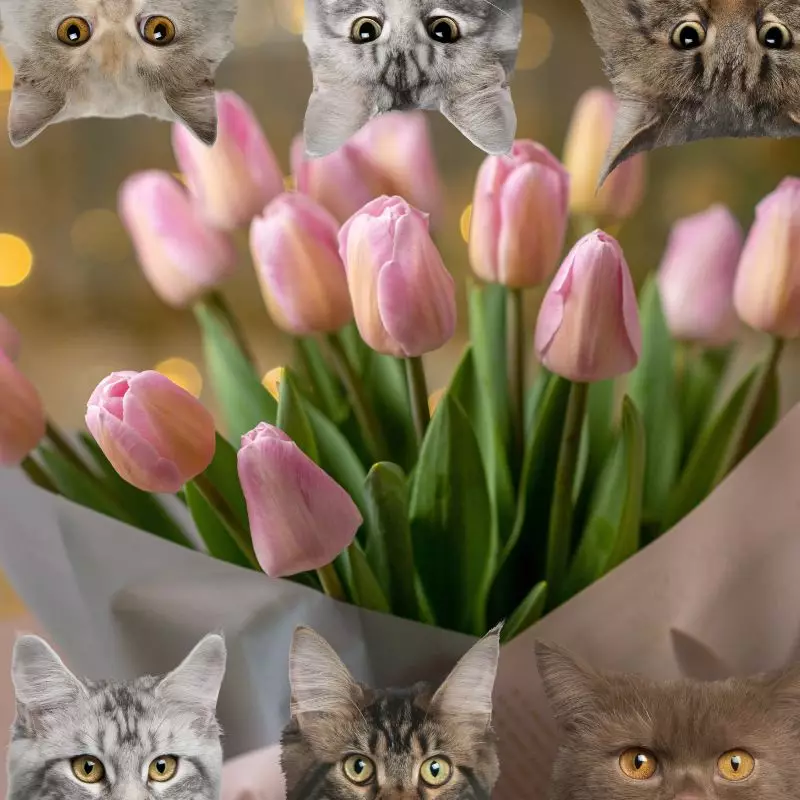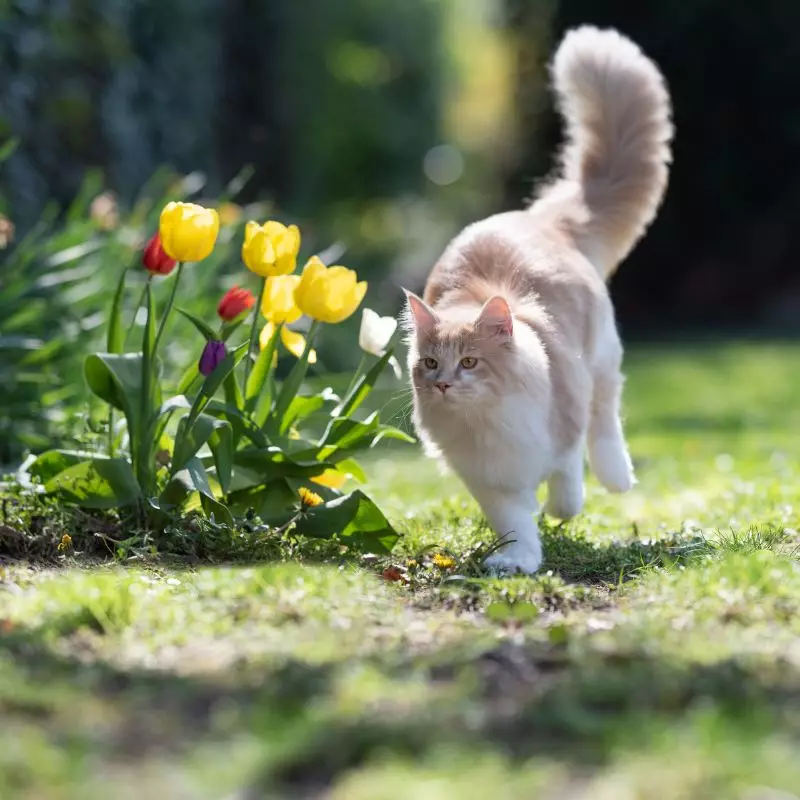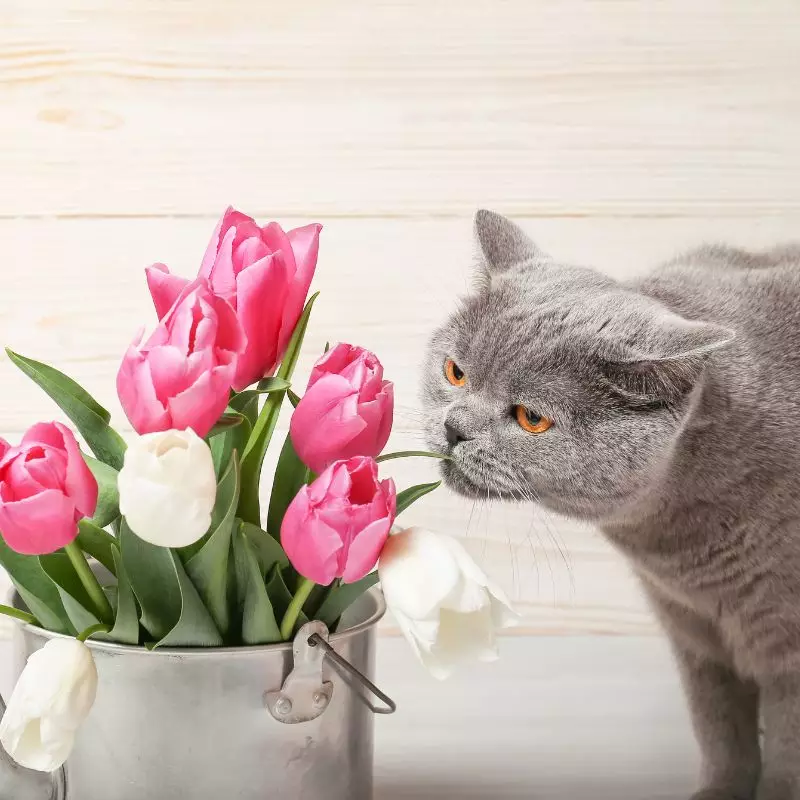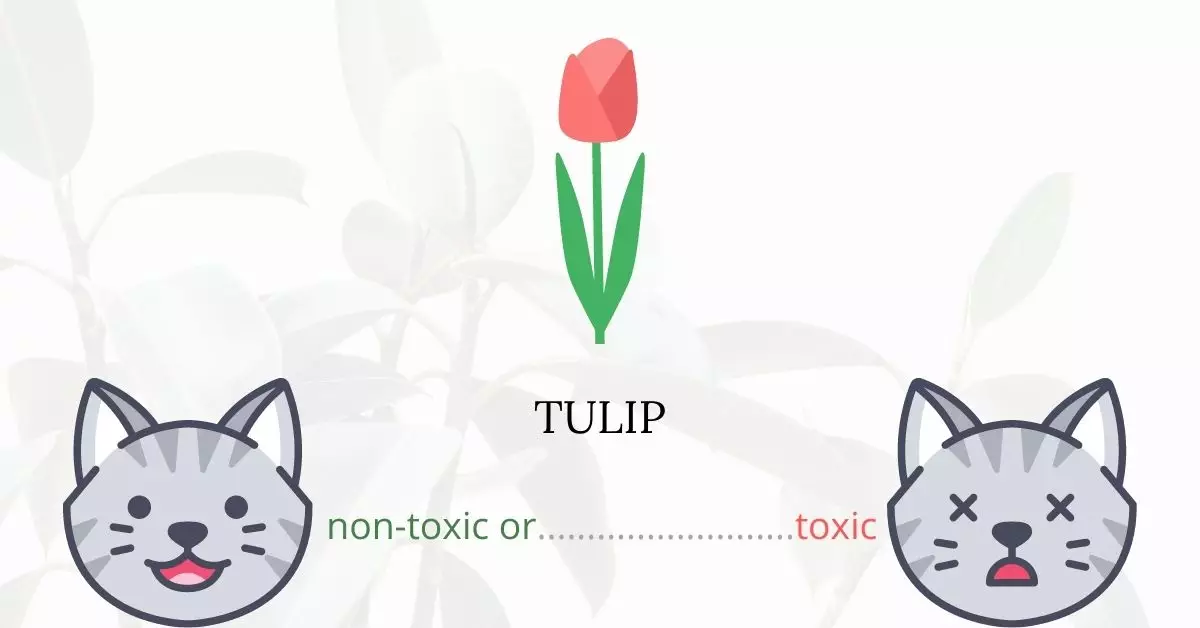Yes, tulips are toxic to cats. Specifically, a compound named Tulipalin A, present throughout the tulip plant, can elicit adverse reactions in cats. Although the highest concentration of this toxin is found in the bulb, the flower, leaves, and stem also contain enough of it to potentially cause respiratory problems in small animals, such as cats. While ingestion of a tulip blossom or leaf is concerning, the consumption of the bulb is considerably more dangerous.
This article was crafted in close collaboration with a team of experienced DVMs (doctors of veterinary medicine). Through their invaluable insights, we strive to provide readers with accurate and up-to-date information on the potential hazards associated with various plants, particularly tulips in this context. Furthermore, our research extends to consulting high-authority websites such as ASPCA and PetMD to ensure comprehensive coverage on every plant’s effects on cats.
Clinical Signs of Tulip Poisoning in Cats

When a cat comes into contact with, inhales, or ingests parts of a tulip plant, certain clinical signs typically manifest due to the toxins, especially Tulipalin A, present in the plant. Here is a detailed breakdown of these signs, their reasons, and what may trigger them:
- Vomiting: This is the body’s immediate response to try and rid itself of the consumed toxin. When a cat ingests parts of the tulip, its stomach recognizes the foreign and harmful substance, prompting a protective mechanism to expel it.
- Diarrhea: Similar to vomiting, diarrhea acts as another protective response. The body accelerates the movement of the intestines to quickly eliminate the toxin from the system.
- Salivation: Excessive drooling or salivation often indicates oral irritation. When a cat chews or even just licks the tulip, certain irritants in the plant can cause discomfort, leading to increased production of saliva.
- Loss of Coordination: The toxins in tulips can impact the central nervous system, which can result in altered coordination or balance in affected cats.
- Lethargy: A common systemic response to many toxins, lethargy signals that the cat’s body is under stress and trying to heal or recover. The energy is being redirected to combat the toxic effects rather than for daily activities.
- Weakness: As the toxin circulates through the cat’s system, it may affect muscular functionality, leading to generalized weakness.
It’s vital for cat owners to meticulously observe and note these symptoms’ progression. Such detailed information is indispensable for veterinarians when diagnosing and treating tulip poisoning.
First Aid and Treatment of Tulip Poisoning in Cats

Your veterinarian’s treatment plan will be determined by how many tulips your cat ate as well as the severity of his symptoms.
If you get your cat to the clinic soon after consuming a little bit of tulip, your vet is likely to induce vomiting to remove the toxins from your cat’s body. In an attempt to flush the toxin out or prevent it from spreading throughout your cat’s body, he may also provide something that can absorb the toxin, install a catheter, or administer fluids through an IV.
In more serious cases or cases where it is unclear how much of a tulip your cat ingested, hospitalization, stomach pumping, and additional monitoring may be required. The vet may want to closely monitor your cat’s oxygen level and heart rate so that he can respond if a serious problem arises
Recovery from Tulip Poisoning in Cats

The length of recovery is mostly determined by the amount of tulip material consumed by the cat and the severity of the symptoms that ensue. Most cats, on the other hand, will only need a week or two to get back into shape.
Prevention of Tulip Poisoning in Cats
To keep your cat from eating tulips, keep an eye on him outside and keep unplanted tulip bulbs away from him. If you see him coming too close to a tulip, interfere and take him away from it. Choose flowers and plants that are safe for your cat to consume instead.
Also, we covered the topic in the video:
If you love plants but have cats at home, check out these lists:





